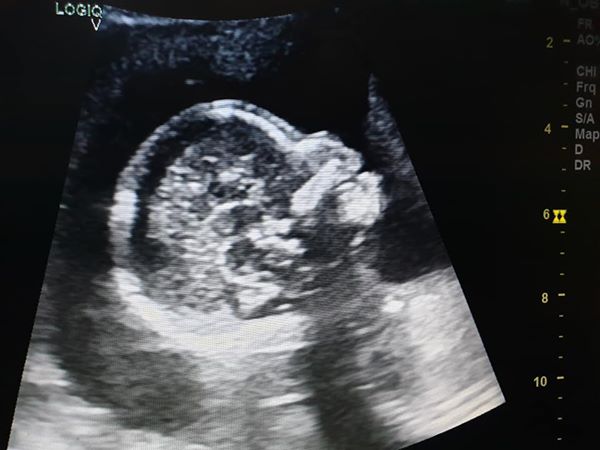Superimposed line sign, SLS is used to evaluate clefts of the secondary palate.
- To identify median clefts.
This sign can be seen from 12 weeks to 20 weeks of gestation.
Seen best at 13 to 17 weeks.
Used at the time of NT scan, in addition to the maxillary gap sign, Axial views, and coronal view ie RNT view or PMT view.
Basically palatal clefts can be ruled out by evaluating the palate, lips in axial, Coronal, Sagital views.
In case of the clefts of the primary palate, generally there is associated cleft lip,with premaxillary protrusion, hence easy to pick up.
Clefts of the secondary palate difficult to pick.
1.But should be picked to evaluate the extent of the primary palatal clefts.
- To detect clefts of secondary palate.
Here comes the role of Superimposed line sign.
The rectangular shaped structure we see in the mid sagital image is formed by two bones, ie vomer bone cranial and hard palate causally.
As seen in the image, The vomer sits on the hard palate along its distal two third aspect, giving it an appearance of Superimposed lines .
This close relationship of vomer and hard palate is called as the Maxillary line or the vomeromaxillary junction.
We need to see these two lines in the evaluation of hard palate, in our NT scans and MTAS. If it’s not seen, close follow up to rule out clefts of secondary palate.
Also use Axial, Coronals to make the complete diagnosis, and to look for extent.
